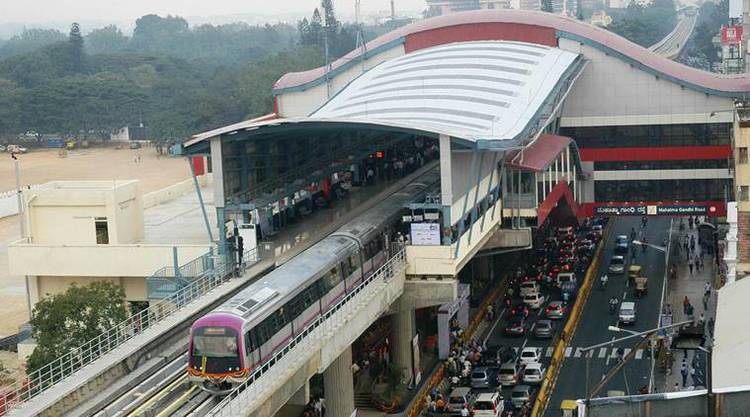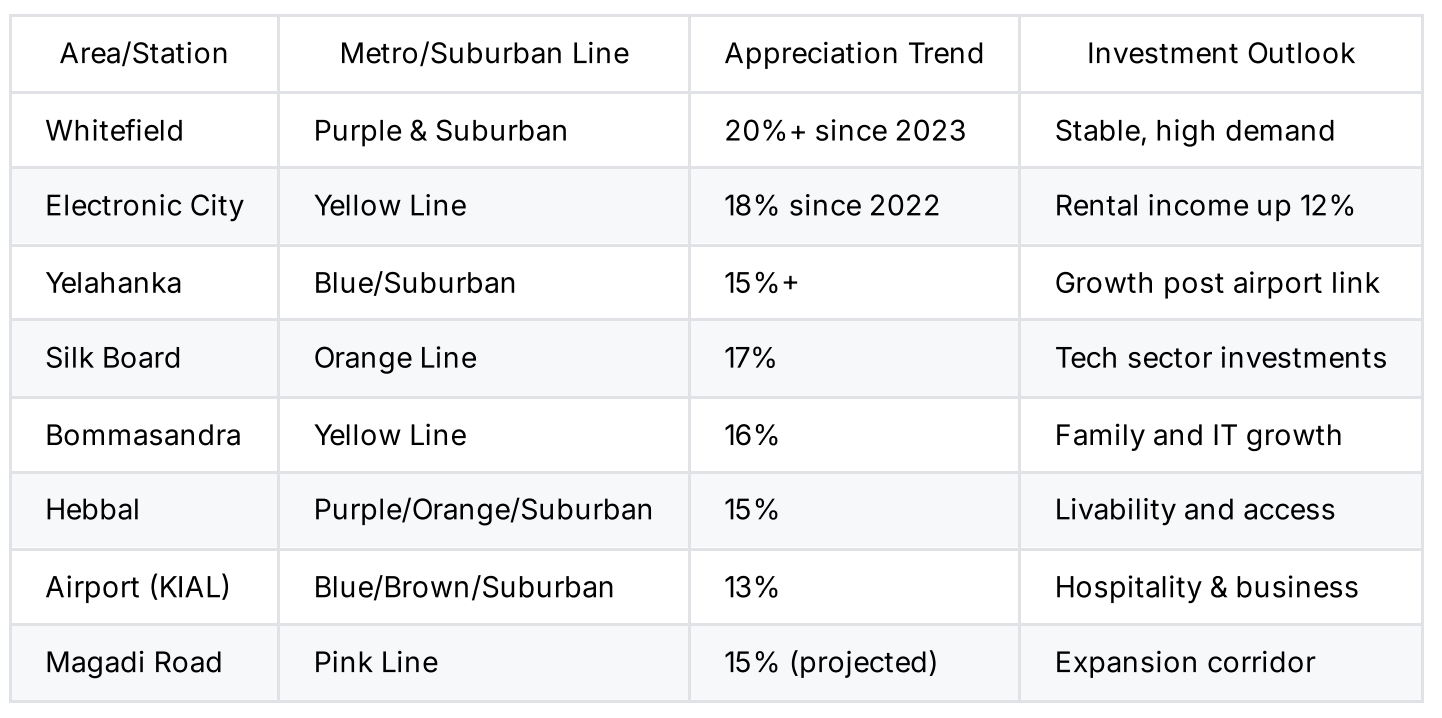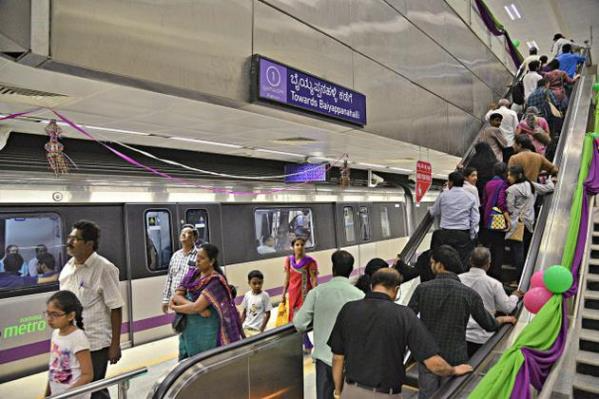Anyone who has lived in Bengaluru for a few years knows how daily commutes can be long and exhausting. Traffic jams, unpredictable travel times and hours spent on the road are part of everyday life. Over the last decade, the metro has started to change that by providing a faster and more reliable way to move around the city.
By August 2025, Bengaluru has more than 96 km of metro operational, connecting important residential and commercial areas.
Several new lines are under construction, reaching growing suburbs like Whitefield and Hebbal. The metro is influencing where people choose to live and work, and properties near upcoming stations are already attracting attention from buyers and investors.
In this blog, we take a closer look at Bengaluru’s current metro network, its future expansions and the impact on the city’s real estate. This insight will be useful for both residents and investors trying to understand how transport infrastructure is shaping Bengaluru’s growth.
Metro at a Glance
Bengaluru’s Namma Metro is steadily becoming an integral part of the city’s transport system. As mentioned in the intro, of August 2025, the network spans 96.1 km and serves 83 stations, carrying over 7 lakh passengers daily.
The metro is managed by BMRCL, which has ambitious plans for expansion. By 2026, the network is expected to cover more than 175 km and long-term plans aim to reach 314 km by 2041.
Currently, Namma Metro operates on three main lines. The Purple Line runs from Challaghatta to Whitefield, covering 43.5 km. The Green Line connects Silk Institute to Madavara, stretching over 33.5 km. The Yellow Line links RV Road to Bommasandra, covering 19 km.

Bengaluru Urban Rail Network

The map above shows Bengaluru’s urban rail network, including both metro and suburban railway lines. The metro currently runs across multiple corridors, represented by Purple, Green, Yellow, Blue, Red, Pink, Orange and Grey lines, connecting important areas across the city.
Alongside the metro, Bengaluru’s suburban railway network, covering lines like Sampige, Mallige, Parijata, and Kanaka, which adds another layer of connectivity, linking the outskirts and satellite towns to the city centre.
Key interchange hubs such as Majestic, Baiyappanahalli, KR Puram, and Central Silk Board allow commuters to switch between different metro lines or connect to suburban trains, making daily travel smoother and faster. These hubs are also seeing growing commercial and residential interest due to the ease of connectivity they offer.
Operational & Upcoming Metro Network
Bengaluru’s metro network is expanding fast, with operational, under-construction and planned lines connecting the city like never before. Here’s a quick overview of each corridor:
Bengaluru Suburban Rail Network
Alongside the metro, Bengaluru is also developing a suburban rail network to connect satellite towns and emerging growth corridors. These lines are expected to complement the metro and provide faster, more reliable transport for daily commuters. Here’s a quick overview:
The suburban rail network is expected to serve over 2 lakh daily commuters, connecting major satellite towns and new growth corridors. Once operational, it will not only ease congestion on city roads but also make previously distant areas more attractive for homebuyers and investors.
Metroʼs Impact on City Mobility
Metro lines are reducing commute times significantly. Trips between major hubs like Electronic City and Central Bengaluru, which earlier took 1.5-2 hours by road, can now be completed in 20-45 minutes on the Yellow Line.
Ridership numbers show how travel patterns are changing. By mid-2024, average daily ridership was over 7 lakh. After the Yellow Line opened in August 2025, it rose to 10.48 lakh, the highest daily ridership recorded by Namma Metro. On its first day, the Yellow Line served more than 83,000 passengers, exceeding projections.

The metro is also easing traffic on major roads. For instance, congestion along Hosur Road during evening peak hours dropped by up to 32% after the Yellow Line began operations.
As the network expands and integrates with the suburban rail system, commute times are expected to decrease further and congestion relief will extend to more areas. Improved connectivity is driving higher demand for residential and commercial properties along metro corridors while also encouraging the development of offices, schools, retail spaces, and other urban amenities.
Real Estate Impact: Present Trends
Metro connectivity is directly affecting property prices and rental demand in Bengaluru. Areas near operational metro lines are seeing property premiums of 15-25% along with higher rental yields.
Certain localities are in particularly high demand:
- Whitefield along the Purple Line
- Bommasandra on the Yellow Line
- Yelahanka on the Blue/Suburban lines are attracting IT sector employees as well as investors
Upcoming metro expansions are also influencing interest in other areas. The Outer Ring Road IT corridor along the planned Orange Line and localities like JP Nagar, Magadi Road and around the Airport, are expected to become new hotspots.
In general, properties within the metro catchment areas have reported up to 20% price growth since line announcements, showing how urban rail development is shaping Bengaluru’s real estate landscape.

(Source: Market reports & BMRCL studies.)
Final Words

The expansion of Bengaluru’s metro and suburban rail network is having a clear impact on the city. Commutes are faster, traffic congestion is easing in key corridors and areas around stations are seeing growing interest from homebuyers and investors alike.
Whether you are looking for short-term opportunities near upcoming lines or long-term growth along established routes, metro connectivity adds real value to property investments.
For families and professionals, living close to stations such as JP Nagar (Green Line), Bommanahalli (Yellow Line), and Kengeri (Green Line) means easier access to workplaces, schools, and amenities, reducing travel stress and improving everyday life.
Looking to explore properties along Bengaluru’s metro and suburban rail corridors? Book a free call with our experts at Propsoch for personalised guidance on finding your ideal home or smart investment.









